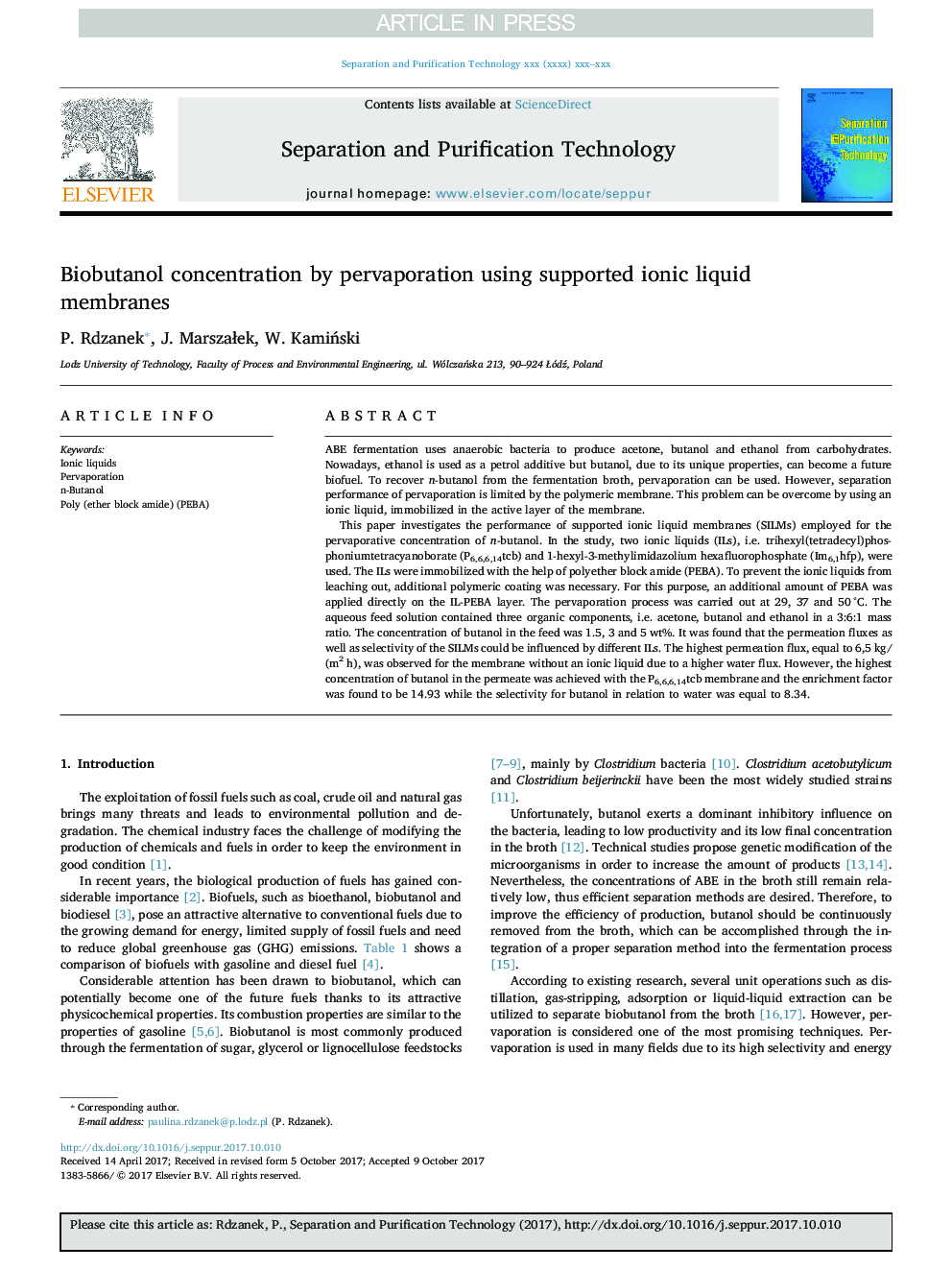| Article ID | Journal | Published Year | Pages | File Type |
|---|---|---|---|---|
| 7043969 | Separation and Purification Technology | 2018 | 8 Pages |
Abstract
This paper investigates the performance of supported ionic liquid membranes (SILMs) employed for the pervaporative concentration of n-butanol. In the study, two ionic liquids (ILs), i.e. trihexyl(tetradecyl)phosphoniumtetracyanoborate (P6,6,6,14tcb) and 1-hexyl-3-methylimidazolium hexafluorophosphate (Im6,1hfp), were used. The ILs were immobilized with the help of polyether block amide (PEBA). To prevent the ionic liquids from leaching out, additional polymeric coating was necessary. For this purpose, an additional amount of PEBA was applied directly on the IL-PEBA layer. The pervaporation process was carried out at 29, 37 and 50 °C. The aqueous feed solution contained three organic components, i.e. acetone, butanol and ethanol in a 3:6:1 mass ratio. The concentration of butanol in the feed was 1.5, 3 and 5 wt%. It was found that the permeation fluxes as well as selectivity of the SILMs could be influenced by different ILs. The highest permeation flux, equal to 6,5 kg/(m2 h), was observed for the membrane without an ionic liquid due to a higher water flux. However, the highest concentration of butanol in the permeate was achieved with the P6,6,6,14tcb membrane and the enrichment factor was found to be 14.93 while the selectivity for butanol in relation to water was equal to 8.34.
Keywords
Related Topics
Physical Sciences and Engineering
Chemical Engineering
Filtration and Separation
Authors
P. Rdzanek, J. MarszaÅek, W. KamiÅski,
